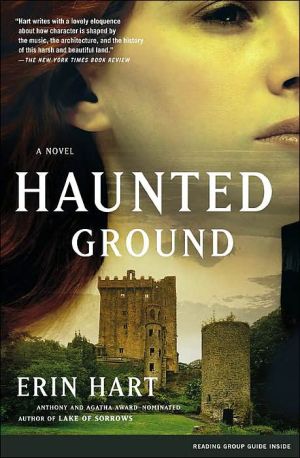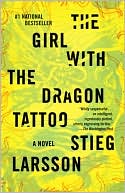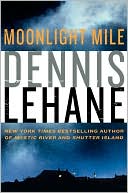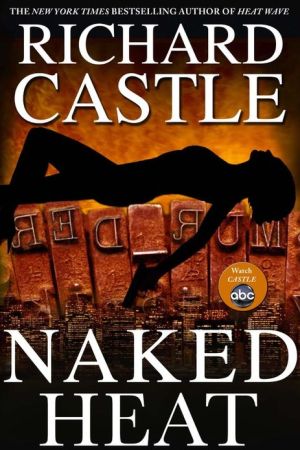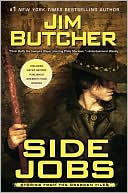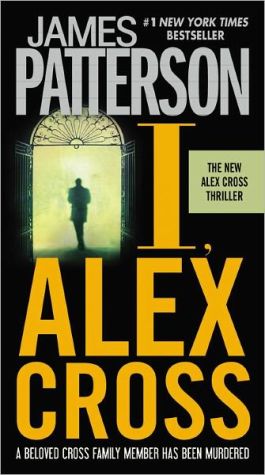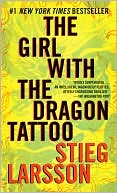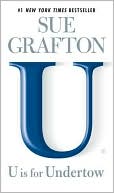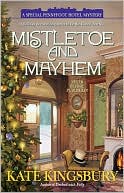Haunted Ground
The dazzling, award-winning debut in a series that delivers mystery, romance, suspense, and fascinating forensic detail\ When farmers cutting turf in an Irish peat bog make a grisly discovery — the perfectly preserved head of a young woman with long red hair — Irish archaeologist Cormac Maguire and American pathologist Nora Gavin must use cutting-edge techniques to preserve ancient evidence. Because the bog's watery, acidic environment prevents decay, it's difficult to tell how long the...
Search in google:
"When farmers cutting turf in a peat bog make a grisly discovery - the perfectly preserved severed head of a young woman with long red hair - Irish archaeologist Cormac Maguire and American pathologist Nora Gavin team up in a case that will open old wounds. Peat bogs prevent decay, so the decapitated young woman could have been buried for two decades, two centuries, or even much longer. Who is she? When was she killed? The extraordinary find leads to even more disturbing puzzles. The red-haired girl is clearly a case for the archaeologists, not the police. Still, her tale may have shocking ties to the present, and Cormac and Nora must use cutting-edge techniques to preserve ancient evidence." "And the red-haired girl is not the only enigma in this remote corner of Galway. Two years earlier, Mina Osborne, the local landowner's Indian-born wife, went for a walk with her young son and never returned. Did Mina simply decide to disappear, or did mother and child become lost in the treacherous bog? Could they, too, be hidden in its depths, only to be discovered centuries from now? Or did the landowner, Hugh Osborne, murder his family, as some villagers suspect?" Bracklyn House, Osborne's stately home, holds many secrets for Nora and Cormac and policeman Garrett Devaney. But time is running out. Devaney's superiors want him off the Osborne case. Now. He wants to stay and find a killer.The New York TimesHart writes with a lovely eloquence about how character is shaped by the music, the architecture and the history of this harsh and beautiful land. — Marilyn Stasio
Chapter One\ With a sodden rasp, Brendan McGann's turf spade sliced into the bank of earth below his feet. Had he known all that he'd turn up with the winter's fuel, perhaps he would have stopped that moment, climbed up onto the bank, and filled his shed with the uniform sods of extruded turf that a person could order nowadays by the lorry-load.\ But Brendan continued, loosening each sopping black brick with the square-bladed turf spade, tossing it over the bank, where it landed with a plump slap. He performed his task with a grace and facility that comes from repeating the same motion times without number. Though his father and grandfather and generations before had taken their turf from this same patch of bog, Brendan never thought of himself as carrying on an age-old tradition, any more than he considered the life cycles of all the ancient, primitive plants whose resting place he now disturbed. This annual chore was the only way he'd ever known to stave off the bitter cold that crept under his door each November.\ Chilblains were the farthest thing from Brendan's mind this unusually sun-drenched late-April morning. A steady westerly breeze swept over the bog, chasing high clouds across the watery blue of the sky, and teasing the moisture from the turf. Good drying today, his father would have said. Brendan worked in his shirtsleeves; his wool jacket, elbows permanently jointed from constant wearing, lay on the bank above his head. He paused, balancing his left arm on the handle of the upright sleán, and, with one rolled-up sleeve, mopped the sweat from his forehead, pushing away the damp, dark hair that stuck there. The skin on his face and forearms was beginning to feel the first pleasant tightness of a sunburn. Hunger was strong upon him at the moment, but just beyond it was an equally hollow feeling of anxiety. This might be the last year he could cut turf on his own land without interference. The thought of it burned in the pit of his stomach. As he clambered up the bank to fetch the handkerchief from his coat pocket, he searched the horizon for a bicycle.\ Forty yards away, his younger brother Fintan made a comic figure as he struggled against the weight of a turf-laden wheelbarrow. Fintan dumped his two dozen wet sods at the end of a long row, one of many that lent the surface of the bog the temporary texture of corduroy. For a good square mile around them, little huts of footed turf covered the landscape. Here and there on the neighbors' allotments, large white plastic bags bulged with sods dried as hard as dung.\ "Any sign of her yet?" Brendan shouted to his brother, who raised his shoulders in a shrug and kept at his work. The two men had been hard at it since nine, with only a short tea break midmorning. Their sister Una was to bring them sandwiches and tea, and pitch in with footing the turf. It was cumbersome, backbreaking work, turning the sods by hand so that they dried in the sun. It would be another month before this lot could be drawn home.\ Tucking his handkerchief in his back pocket, Brendan descended once more into his gravelike void, noting with a small grimace of satisfaction the angled pattern his sleán had made down the wall of the bank. He was reaching the good black turf now, more appreciated in these parts for its long-burning density than for the fact that it had remained in this place, undisturbed and undecayed, for perhaps eight thousand years.\ He set to work again, trying to drown out the rumbling in his belly by concentrating on the sound and the rhythm of cutting. He was used to hard physical labor, but there was no doubt about it, something in the bog air put a fierce hunger on a man. What might the day's lunch be? Chicken sandwiches, or egg, or perhaps a bit of salty red bacon on a slab of brown bread. Each stroke became a wolfish bite, a slug of hot sweet tea to wash it down. One more row, he thought, heaving each successive sod with more violence, just one more row — and then his blade stopped dead.\ "Shite!"\ Fintan's head poked into view at the edge of the cutaway. "What's the matter? Strike a bit of Noah's ark down there?"\ "Ah, no," Brendan said. "Only a bit of horsehair."\ There were four things, their father always said, that could stop a man cutting turf. Brendan could hear the old man's voice: Wig, water, blocks, and horsehair. Then he'd hold up four fingers in front of their faces. Meet any of them, boys, and it's your Waterloo.\ "Hand us down the spade, will yeh?"\ Fintan obliged, then leaned on the handle of his fork to watch. Though these things typically turned out to be tree trunks and roots, other wonders turned up in bogs occasionally — rough beams of oak, ancient oxcarts, wheels of cheese or wooden tubs of butter. Stores buried for keeping in cool wetness and long since forgotten — objects caught and suspended outside of time by the watery, airless, preserving power of the bog.\ Working deliberately, Brendan dug around the perimeter of the fibrous mat, probing for its edges, and scraping away loose bits of peat. He knelt on the spongy bank and pulled at the strands that began to emerge from the soaking turf. This was not horsehair; it was tangled and matted, all right, but it was too long, and far too fine to be the rooty material his father called horsehair. Brendan worked his broad fingers into the dense black peat he'd pried loose with the spade. Without warning, a block in his left hand gave way, and he cast it aside.\ "Holy Christ," Fintan whispered, and Brendan looked down. Almost touching his knee were the unmistakable and delicate curves of a human ear. It was stained a dark tobacco brown, and though the face was not visible, something in the line of the jaw, and the dripping tangle of fine hair above it, told him at once that this ear belonged to a woman. Brendan struggled to his feet, only dimly aware of the cold water that was seeping through the knees of his trousers and down into his wellingtons.\ "Sorry, lads. You must be perished with the hunger." Una's breathless apology carried toward them on a bit of breeze. "But you should have seen me. I was literally up to my elbows..." Her voice trailed off when she saw the faces her brothers turned toward her. Brendan watched her stained fingers tighten their grip on the flask, and on the sandwiches she'd wrapped hastily in paper, as Una stepped to the edge of the bank beside Fintan and looked down at their awful discovery.\ "Ah, Jaysus, poor creature" was all that she could say.\ Copyright © 2003 by Erin Hart
\ The New York TimesHart writes with a lovely eloquence about how character is shaped by the music, the architecture and the history of this harsh and beautiful land. — Marilyn Stasio\ \ \ \ \ Publishers WeeklyCutting turf in the peat bogs of his Ireland farm, Brendan McGann occasionally finds old oak beams, oxcarts or tubs of butter and cheese buried ages ago and forgotten. But he's hardly prepared for the gruesome discovery he makes one pleasant April morning: the perfectly preserved head of a woman. So begins Hart's debut thriller, which follows archeologist Cormac Maguire, maverick local detective Garret Devaney, and Nora Gavin, an American anatomist lecturing at Trinity College Medical School, as they investigate the farmer's grisly finding, which could date back quite far, given that peat bogs can preserve bodies for centuries. Cormac and Nora stay in the house of Hugh Osborne, the owner of a decaying manor who also happens to be the prime suspect in the unsolved disappearance of his wife and infant son two years ago. The accommodations are not quite the Ritz. Osborne's dour cousin, Lucy Osborne, is the housekeeper, and her son, 17-year-old Jeremy, who drinks too much, also lurks around the estate. Nora finds a filthy, dead crow on her bed, as well as broken glass littering her bathroom floor. What's going on in this malevolent household? In addition to a complex, multilayered plot that involves both contemporary and historical crimes, Hart's novel is rich in local color: evenings at the pub, the petty feuds and jealousies of the townspeople and the traditional music and folk culture of Ireland are evocatively rendered. Agent, Sally Wofford-Girand. 3-city author tour. (May) Copyright 2003 Reed Business Information.\ \ \ Library JournalIn the rural West of Ireland, two farmers cutting peat from a bog discover the severed head of a young red-haired woman and immediately summon the local police. They, however, already have their hands full investigating the disappearance of the wife and young son of the local land baron, Hugh Osborne of Bracklyn House. Because peat bogs prevent decay, it's hard to tell whether the young woman died weeks, years, or centuries ago, so Irish archaeologist Cormac Maguire and American Nora Gavin, a visiting lecturer in pathology, are called in to help. Local gossip favors Hugh Osborne as the possible murderer of his wife and child and links him romantically to young artist Una McGann. Also among the local suspects are Una's brother, Brendan, and Hugh Osborne's cousin, Lucy, and her teenage son, Jeremy. As Gavin and Maguire dig deeper, local folklore leads them to the story of a young woman who was beheaded for killing her child in the 1600s. But where's her body, and what happened to the Osbornes? Skillfully textured with lush Irish landscape, folklore, and music, this well-executed first novel weaves together Ireland's turbulent past and its rapidly emerging technological present in a wonderfully entertaining plot; it also introduces a pair of appealing amateur sleuths. Highly recommended for both fiction and mystery readers. [Previewed in Prepub Alert, LJ 1/03.]-Susan Clifford Braun, Aerospace Corp., El Segundo, CA Copyright 2003 Reed Business Information.\ \ \ \ \ Kirkus ReviewsThe boggy shores of Lough Berg, in the wilds of West Ireland, yield up a host of crimes, past and present, for Dubliner Cormac Maguire and Irish-American Nora Gavin. Maguire, a professor of archaeology, is accustomed to fieldwork on short notice. But when farmer Brendan McGann, who still insists on cutting turf by hand, unearths the severed head of a woman with wild red hair, perfectly preserved by the peat, Maguire hightails it to Galway, recruiting anatomy lecturer Gavin to help him examine the grisly find. In the town of Dunbeg, their professional interest soon competes with their personal baggage, since the head-over 300 years buried, Nora discovers-starts village tongues wagging over the more recent disappearance of wealthy landowner Hugh Osborne's India-born wife and their two-year-old son Christopher. And Mina Osborne's disappearance reminds Nora all too much of the murder of her sister Tr'ona, killed, Nora is convinced, by Tr'ona's husband Peter. Cormac, meanwhile, takes advantage of the dig to listen to local musicians play Galway folk tunes and to visit the Dungarven house where his mother raised him after his father abandoned them. He also stops resisting his attraction to Nora and begins to protect her, both from her growing obsession with the ca'lin rua-finding out how the red-haired girl died and how her head came to be buried in Drumcleggan Bog-and from whatever menacing stranger has telephoned threats in the night and placed a dead crow in her bed. As Nora and Cormac search for answers, the two academics are joined by a professional: Detective Garrett Devaney of the Dunbeg Garda, who courts the wrath of his superiors and tries the patience of his wife Nuala by continuingto investigate long after Mina and Christopher's disappearance has been turned over to the task force in Dublin. Spooky and compelling: Hart's debut suspenser does for Galway what Sharyn McCrumb does for Appalachia. Agent: Sally Wofford-Girand\ \
